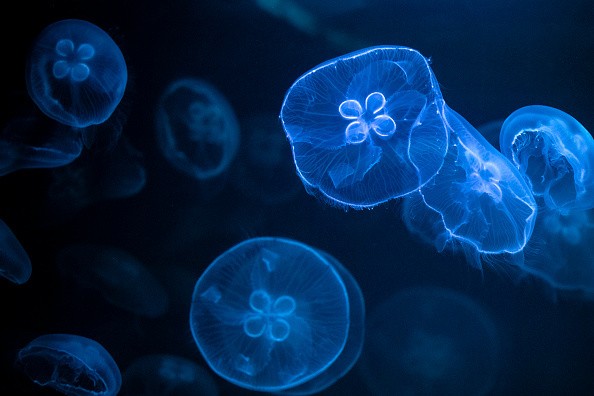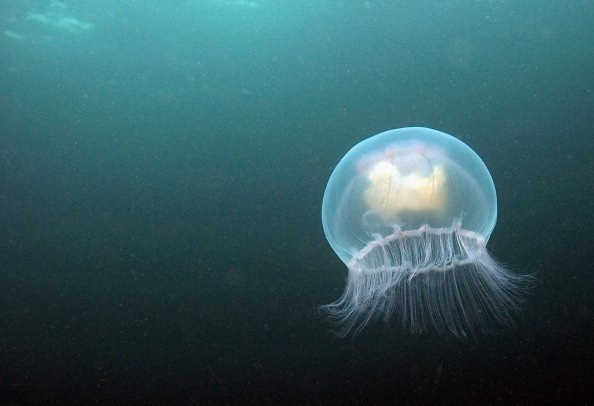A police force said hundreds of white and purple jellyfish washed up on beaches have stung "too many people."

White/Purple Jellyfish Spotted in Shoeburyness
The creatures have been found in Leigh-on-Sea, Southend-on-Sea, and Thorpe Bay in Essex. Community group Southend Beach Care encouraged people not to go close to them or even touch them.
In a tweet, Essex Police said: "There are multiple amounts of white/purple jellyfish along Southend seafront, with too many people being stung, it has been reported that hundreds of the jellyfish have been washed up on the beach and floating in the water."
Derren Butler, from Westcliff-on-Sea, revealed that he spotted two recently in Shoeburyness. He said he has seen them abroad, but never in the Southend area. "I go for a day-to-day walk on the beach, but I'm steering clear from the area just to be on the safe side," Derren Butler said.
There are over 200 species of jellyfish all over the world, with six species commonly found in British waters, according to the Marine Biological Association.
Southend Beach Care said: "There are so many jellyfish on the beach. We are fortunate to have profuse marine life, so please give them their respect and leave them alone and if stung seek medical attention when needed."
Also Read : Immortal Jellyfish, Radiated Tortoise, and More: 11 Ancient Animals Older Than Every Human on Earth
Jellyfish
For millions of years, jellyfish have drifted along on ocean currents, even prior to dinosaurs living on Earth. The jelly-like creatures pulse along on ocean currents and are profuse in warm and cold ocean water, in deep water, and along coastlines. But in spite of their name, jellyfish aren't truly fish - they're invertebrates or animals that do not possess backbones.
Jellyfish possess minute stinging cells in their tentacles to stun or paralyze their prey before they consume them. Inside their body - bell-shaped - is an opening that is its mouth. They feed and eliminate waste from this opening. As jellyfish release water from their mouths, they are moved forward.
Tentacles hang down from the jellyfish's fine baglike body and sting their prey. Jellyfish stings can be agonizing to humans and at times very dangerous. But jellyfish don't attack humans on purpose. Most stings happen when people touch a jellyfish by accident, but if the sting comes from a dangerous species, it can be lethal. Jellyfish usually digest their food very quickly. They wouldn't be capable of floating if they had to carry a huge, undigested meal all over.

What to do When Stung
- Rinse the affected region with sea water (don't use fresh water)
- Remove any spines from the skin with the use of tweezers or the verge of a bank card
- Immerse the affected area in very warm water (hot can be tolerated) for a minimum of 30 minutes - use hot flannels or towels if you are not able to soak it
- Take painkillers like ibuprofen or paracetamol
Related Article : Mysterious 'Blob' Could Be Killing Off Thousands of Jellyfish are Dying All Over the World
For more news, updates about jellyfishes and similar topics don't forget to follow Nature World News!
© 2025 NatureWorldNews.com All rights reserved. Do not reproduce without permission.





